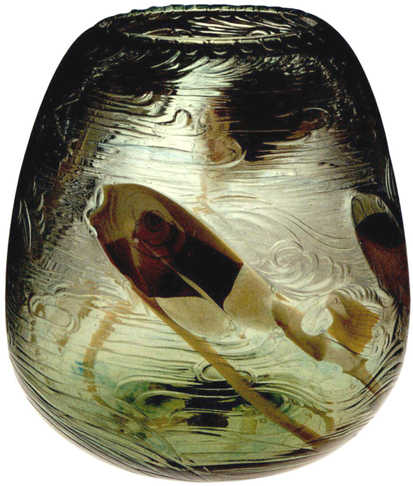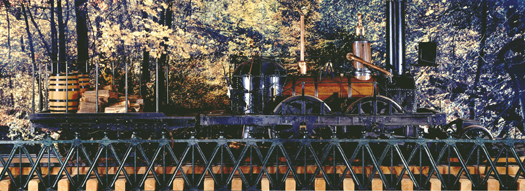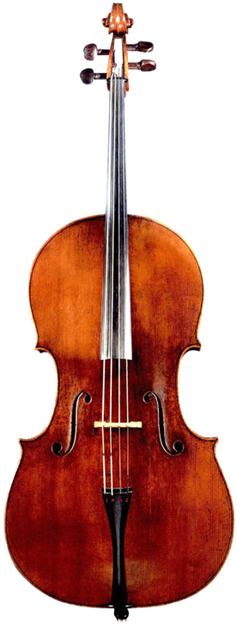
The answer lies in the complexities and vagaries of value. Just as yesterday’s trash, to coin a phrase, can be today’s treasure, today’s treasure may indeed become tomorrow’s trash. An artifact might be worth saving—worth treasuring—because it was rare or because it was representative. It might be a treasure because it is interesting, valuable, or important. It might be treasured as a souvenir of the past or for its interest to the present or the future. It might be a relic, valuable for its connection to some famous person or significant event. It might be a treasure to an individual, a community, or the nation. It might be an aesthetic treasure or a treasure despite its artlessness.
Aesthetic treasures—the things collected by art museums—are in many ways easier to evaluate. Art historians have reached a general agreement on the value of art and an aesthetic canon. But that canon is fairly recent, and the history of the Smithsonian’s art collections in the nineteenth century shows the slipperiness of aesthetic judgments. Among the goals defined for the Smithsonian in its early days was the creation of a public art collection. But the fledgling Institution could not afford original paintings, so it turned instead to copies of great paintings and sculptures and acquired prints, including a collection of 1,335 European engravings owned by George Perkins Marsh, U.S. congressman from Vermont. (The Marsh Collection was the first collection purchased by the Smithsonian.) The rationale given by Charles Coffin Jewett, assistant secretary of the Smithsonian—“Engravings furnish us with translations … of the best creations of genius in painting and sculpture, the originals of which are utterly beyond our reach”4—suggests what he saw as the value of artistic treasures: their link to genius and creativity. Similarly, many museums purchased plaster casts of classical sculptures.

Favrile glass vase by Tiffany Glass and Decorating Company, New York City, 1893–96. Louis Comfort Tiffany, a leading figure of the Art Nouveau movement, was especially admired for his stained-glass windows and iridescent Favrile blown glass bowls and other vessels. This vase is part of a group selected by Tiffany for the Smithsonian in 1896, when curators were collecting contemporary American crafts to illustrate the links between art and industry. (photo credit 4.1)
By the end of the nineteenth century, however, art museums were valuing the authentic over the copy, inspiration over education, and plaster casts and engravings vanished into storage vaults. They were no longer treasures but embarrassingly poor substitutes for the real thing. The concern for the authentic, for masterpieces, was part of a fierce debate among American art museums at this time. Should they, like the Metropolitan Museum of Art in New York City, be galleries of “masterpieces by artists of different countries hung to secure the greatest aesthetic satisfaction, as was done in the Louvre”? Or should they, like the Boston Museum of Fine Arts and the Pennsylvania Museum in Philadelphia, model themselves on the South Kensington Museum in London and focus on industrial art, design, and education?5

A Fruit Piece, mezzotint by Richard Earlom after Jan van Huysum, 1781. In 1849 the Smithsonian acquired some 1,335 engravings, including works by Albrecht Dürer, Rembrandt, and others, collected by George Perkins Marsh, U.S. representative from Vermont and a Smithsonian Institution regent. (photo credit 4.2)
The Smithsonian, like many American museums, chose the latter. Its curators considered it their mission “to educate the public taste, and … to forward the growth of the arts of design.”6 Whereas earlier collecting aimed to demonstrate how American arts and crafts measured up to European standards, by the 1890s the Smithsonian was celebrating and helping cultivate a uniquely American style. From Tiffany vases to folk art, it valued artistic objects not simply for aesthetics but as historical and contemporary expressions of American industry and identity and as models for industrial design.

Scrimshaw, 1800s. Sailors on whaling voyages in the 1800s often passed the time by carving intricate patterns and pictures on bone or ivory. In 1964 the Smithsonian acquired Eleanor and Mabel Van Alstyne’s collection of nineteenth-century American folk art. These examples of everyday “people’s art”—including weather vanes, carousel animals, shop signs, portraits, and scrimshaw—were described by curators as “the most truthful expression of [America’s] creative talents.” (photo credit 4.3)
By the early twentieth century most American art museums had adopted the aesthetic goals of the Metropolitan Museum of Art. The Smithsonian joined this movement with the creation of a National Gallery of Art in 1907, but this gallery—its name was changed to the National Collection of Fine Arts in 1937, when the present National Gallery was created—was small in comparison with the Smithsonian’s collection of industrial and practical arts. The new National Gallery became Washington’s gallery of masterpieces, and the Smithsonian collections focused instead on anthropology, industry, and history. Aesthetic value was, in general, given less importance than scientific or historical value. In Greenblatt’s terms, resonance rather than wonder—stories rather than aesthetics—would guide collecting.
What, then, makes something of historical value? The answers are many, and they tell much about people’s feelings toward things and toward the past. Age, rarity, and connection with historic events or people all help produce historical value. But there is more to historical value than that. Artifacts have historical value when people today care about the history they represent.7
The first and most obvious source of value is simply age. Old objects are more likely to be of historical interest than new objects. But not all old things are equally valued. A rock by the side of the road is a few billion years old, but it holds little historical interest except to a geologist. Old buildings are razed every day to make room for new buildings, but only a select few inspire people to throw themselves in front of the bulldozers. Landfills overflow with old clothes, cars, and other castoffs from a consumer society, where old usually connotes something out of fashion, out of date, and ready to be replaced.
Some objects valued and preserved because of their age are distinguished not just as old but as the oldest. Museum guidebooks are filled with such phrases as only known, oldest surviving, first successful, and other superlatives. Knowledge of an object’s rarity—that it is the first, last, or only one of its kind—can dramatically increase appreciation of its value.
The 1831 John Bull locomotive, a Smithsonian treasure, was not the first locomotive in the world or the first locomotive in America. It was, however, one of the first locomotives to be used successfully in America and was significant to railroad builders of the day. But its value today comes not from its history so much as from its survival. Locomotives from the 1830s are rare; thus, its rarity makes it a treasure. Today it is the world’s oldest operable locomotive—or, more grandly, the world’s oldest operable self-propelled vehicle.

John Bull locomotive, 1831. The John Bull was built by Robert Stephenson and Company in England and purchased by the Camden and Amboy Railroad and Transportation Company in 1831. Previously American railroads had tried to build their own locomotives, but the Camden and Amboy decided to buy a locomotive type that had already proven itself. The John Bull was used by the railroad for many years. In 1876 its historical value was recognized when it was displayed at the Centennial Exhibition in Philadelphia in an exhibit organized by J. Elfreth Watkins. When Watkins became curator of transportation at the Smithsonian in 1884, he acquired the locomotive for the museum. It has been on display almost continuously since then (see this page). In 1981, for its 150th anniversary, it was operated for one last time, gaining the title “oldest operable locomotive.” In 1985 it was flown to Dallas for an exhibition, adding another “oldest” to its name: the oldest locomotive to fly in an airplane. (photo credit 4.4)
In addition to antiquity and rarity, objects gain historical value from their associations with a person, place, or event. An object with a documented history of manufacture, ownership, and use carries more weight than an anonymous antique. And, of course, the more illustrious and exciting the provenance, the better. But evaluating the significance of these associations raises historical questions. In the case of locomotives, which was most important—the first locomotive that moved under its own power, the first that did useful work, the first that made money for its operator, or the first of the type that came to dominate the field? One of the great controversies in Smithsonian history began in 1914 over the wording of a label for an airplane. Curators insisted that the Langley aerodrome, the invention of Samuel Langley, former Smithsonian secretary, was the first airplane “capable of flight” even though it never flew successfully. The Wright brothers refused to donate the first airplane that actually flew, the Wright Flyer, until the 1940s, when the Smithsonian backed off this claim.8
Historical questions help define historical treasures. The value of artifacts, even the way that value is determined, changes over time as different aspects of history become more important or relevant. Historical treasures are found where they are sought, in the history that seems worth examining. Historical value reflects the history that people find important.

Stradivari violoncello, 1701. The Smithsonian today has one of the finest collections of Stradivari instruments in the world. Its first Stradivari was this 1701 violoncello, donated in 1981 by Charlotte Bergen, who wished to support American performances of European music—a purpose not too different from the Smithsonian’s reasons for collecting European art more than a hundred years earlier. (photo credit 4.5)

Duke Ellington manuscript score for “Light,” part of Black, Brown and Beige, about 1940. In 1988 the Smithsonian acquired more than three hundred cubic feet of archival materials relating to the career of the great jazz musician Duke Ellington: sound recordings and original manuscripts as well as photographs, scrapbooks, and business records. The collection documents Ellington’s contributions as a composer, performer, orchestra leader, and an ambassador of American music and culture abroad. The Ellington Collection is both an aesthetic treasure and a historical one, used by musicians for performances and by scholars to better understand the man and his music. (photo credit 4.6)

Quilt made by members of the Presbyterian Church, Maltaville, New York, 1847. This album quilt was presented to Mary Benton Barnard Hill, wife of the pastor of the Presbyterian Church, as a “token of esteem.” Each square was made by a different seamstress, and many are signed. The Smithsonian acquired the quilt in 1931. (photo credit 4.7)